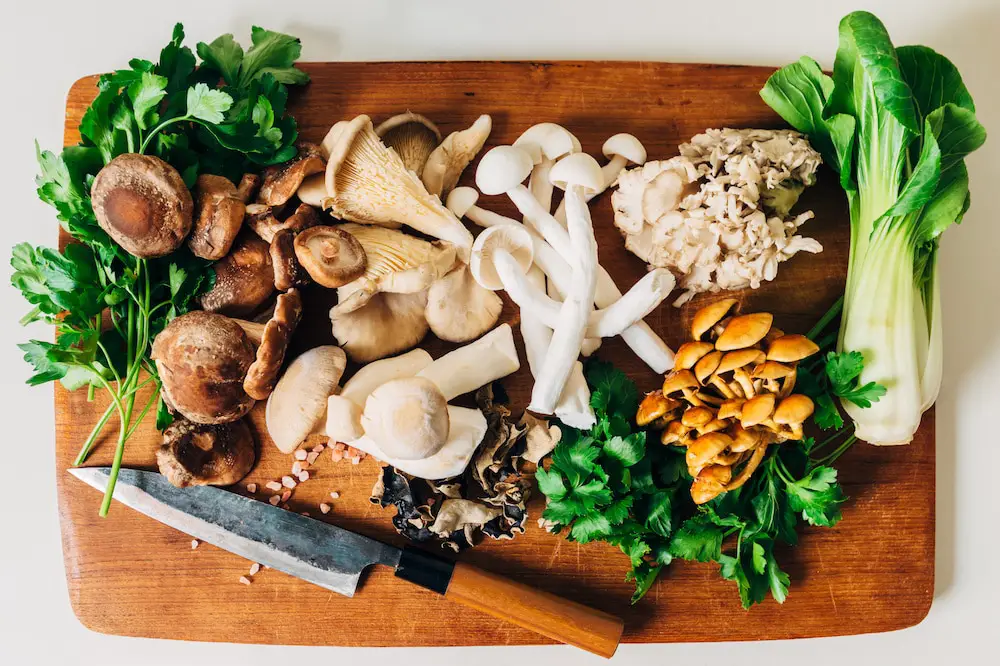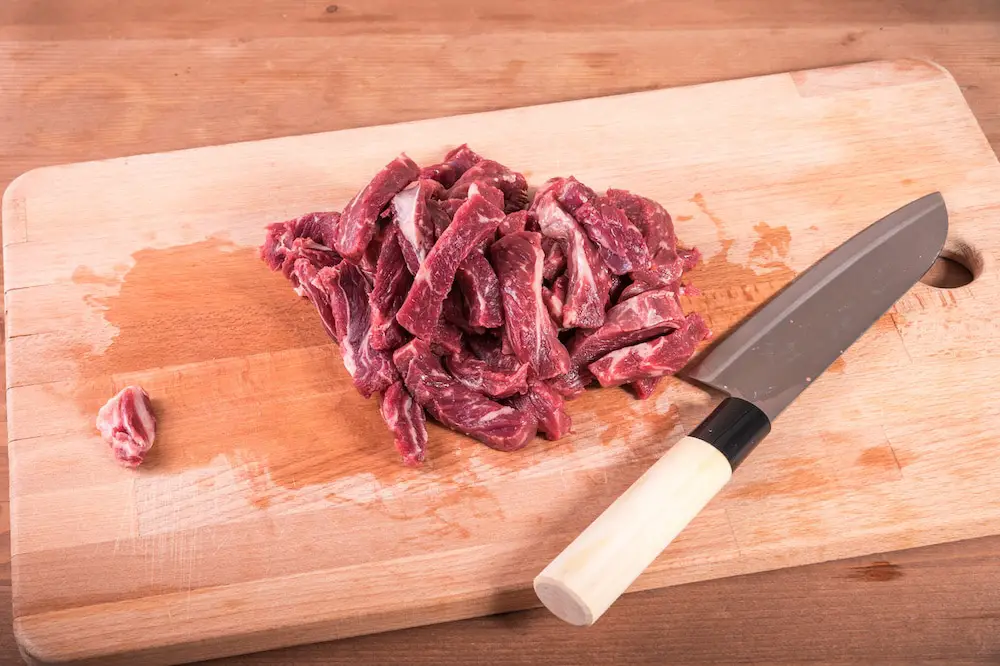For years, Japanese knives have been making a name for themselves in the culinary world.
In that case, many are curious to know what is a Gyuto knife.
Technically, it is not entirely Japanese. Instead, it’s a combination of the European chef’s knife and the Japanese Nakiri knife.
It can do almost anything and everything, and you can use it to cut fruits, vegetables, meats, and even fish.
What Is a Gyuto Knife?
The Japanese word “gyuto” means “cow sword.”
The Gyuto knife got this name because it was initially intended for slicing meat, specifically beef.
Today, however, it has evolved into a multipurpose knife with a sharp edge similar to the Western Chef’s knife.
A Gyuto knife is the Japanese counterpart of a chef or kitchen knife in the western world.
It is a suitable tool for various types of food preparation tasks.
It’s similar to a Western Chef’s knife but with a sleeker profile and premium-quality Japanese stainless-steel blade.
A Gyuto knife is a chopping board’s partner.
It has a pointed tip and an extra-sharp blade perfect for mincing using the rocking motion.
How Is a Gyuto Knife Different From a Western Chef’s Knife?
Both of these knives are versatile, making them a valuable tool in any kitchen.
You can use them to cut a slab of meat or chop vegetables.
Also, both of them are comfortable to use, regardless of your preferred cutting technique.
They can make precise cuts, and you can effortlessly maneuver their sharp blade to make tinier slices.
That said, where do they differ then?
The Blade’s Steel
The first significant difference between these knives is the kind of steel used to make the blade.
Traditional Gyuto knives are often made of a kind of steel with high carbon content.
On the contrary, a Western Chef’s knife typically uses slightly softer steel for its blade.
Japanese steel can produce an extra-sharp edge with excellent edge retention, allowing you to make precise cuts.
In general, Japanese steel can withstand and endure the test of time better than the other steel types used for knives.
Conversely, other carbon steel types dull quicker than a Japanese-made knife.
The Japanese-crafted stainless steel originated from the city of Seki and is used in most of their top-of-the-line knives.
Naturally, most Western Chef’s knives use steel from different areas in the Western part of the world.

The Blade’s Construction
Aside from the steel used to make the blade, the construction of the blade itself is different between a Gyuto and a Western Chef’s knife.
You will find the balance point of a Gyuto knife nearer to the blade’s edge than a classic Western Chef’s knife.
As a result, chefs who use a Gyuto knife have more agility and precision as they complete tasks in the kitchen.
In addition, the blade on a Gyuto knife is slightly thinner and lighter than its average western counterpart.
This blade profile makes chopping and dicing smaller vegetable pieces a lot easier than when using other kitchen knife varieties.
Then, there is the question about single versus double-bevel knives.
Traditionally, Japanese-made blades are single-beveled to make it easier to maintain their sharpness.
On the other hand, Western Chef knives favored double-bevel blades before, though you will now find this blade profile on both.
How Does a Gyuto Knife Look Like?
What is a Gyuto knife’s profile? How does it look compared to other kitchen knives?
A Gyuto knife comes with a longer blade and typically measures between eight to 12 inches. This knife length allows you to cut more oversized items.
It also comes with a double-bevel edge, which is far different from the traditional Japanese-made knives.
Double-beveled knives mean that sharp edges are found on both sides, making them suitable for left- and right-handed users.
With a Gyuto knife, you will have a low and pointed tip, making it the perfect tool for some detailed work.
Because of the knife’s profile, most of the blade’s parts come in contact with the chopping board without the need to lift it.
As a result, you’ll find that this design choice helps reduce stress on your cutting hand.
A Gyuto knife is very lightweight and ergonomic, making it suitable for delicate works like mincing meats and vegetables.
The handle of the Gyuto knife comes in two different styles: the classic partial tang Japanese style called “Wa” and the western style equipped with a full tang, also known as “Yo.”
Typically, the handle’s butt is flat since it is used to tap the partial tang inside.
What Blade Materials Are Used on Gyuto Knives?
A Gyuto knife may use durable stainless or carbon steel material for its blade.
Chefs choose which one to use depending on their needs and preferences.
Some base their knife material choice on the price, the maintenance required, or the user’s level of expertise.
Stainless-Steel Blade
Gyuto knives made of stainless steel are resistant to discoloration and rust and may need regular sharpening.
This material type is ideal for the average-skilled chef.
Carbon Steel Blade
Gyuto knives made of carbon steel material have better edge retention than stainless steel models.
Though they don’t need frequent sharpening, blades made from carbon steel require regular care and maintenance.
These knives must be wiped dry of any moisture before storing in a dry and ventilated location.
If you have not used the knife and stored it for a long time, you must apply a light coat of mineral oil before use.
The Beauty of the Gyuto Knife
As you probably already know, it wouldn’t hurt to have different types of kitchen knives in your collection.
This way, you can find out for yourself which knives offer the best performance and longevity.
After knowing what a Gyuto knife is, it’s easy to see why a lot of chefs want one in their kitchen.
Besides, Japanese knives are known for their exquisite looks and exceptional performance, so it’s no surprise that they are sought after worldwide.
Add to that their rich history, and you’ll have a knife that’s worthy of a place in your kitchen.

